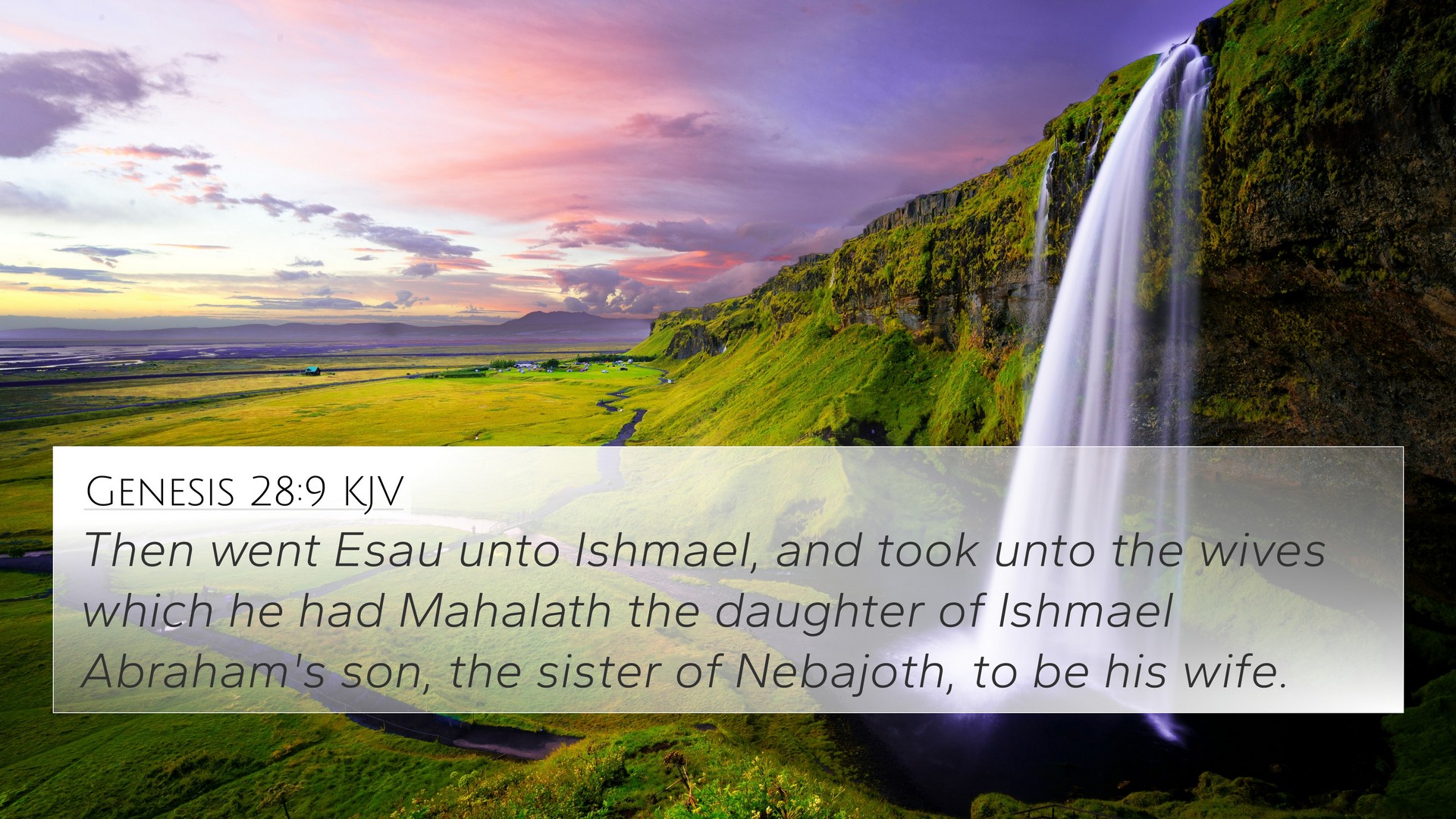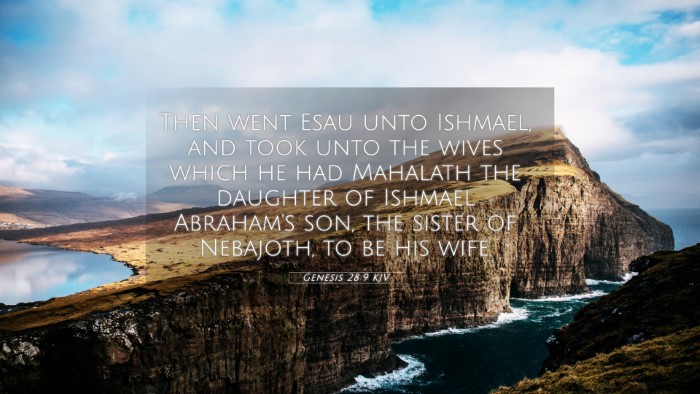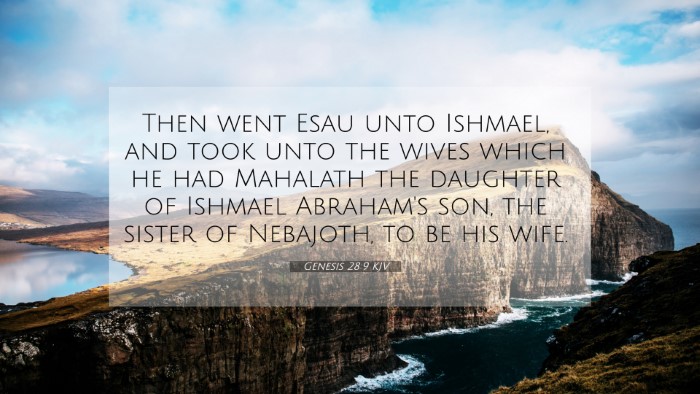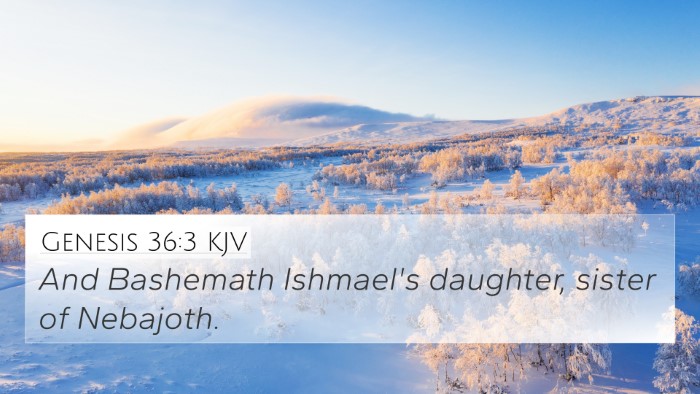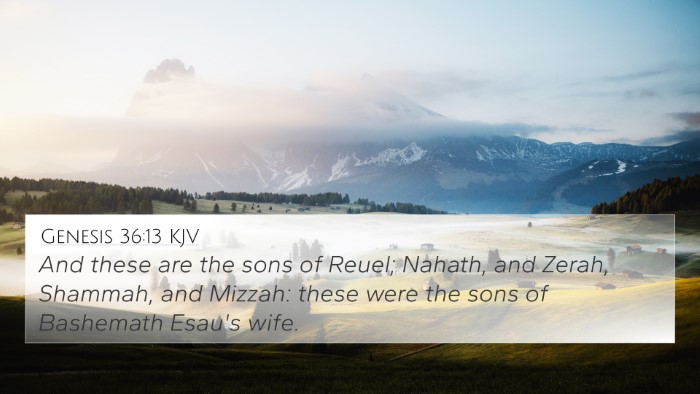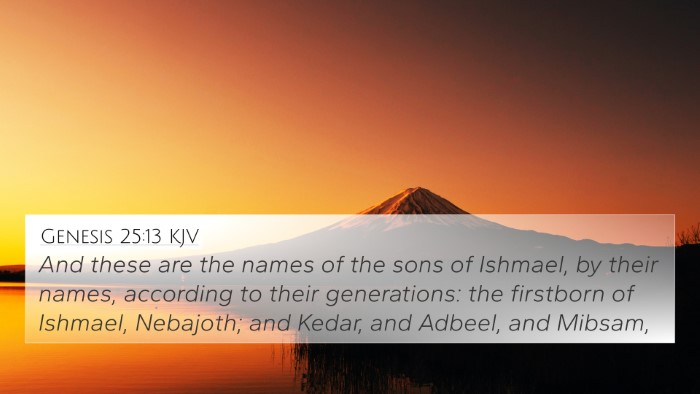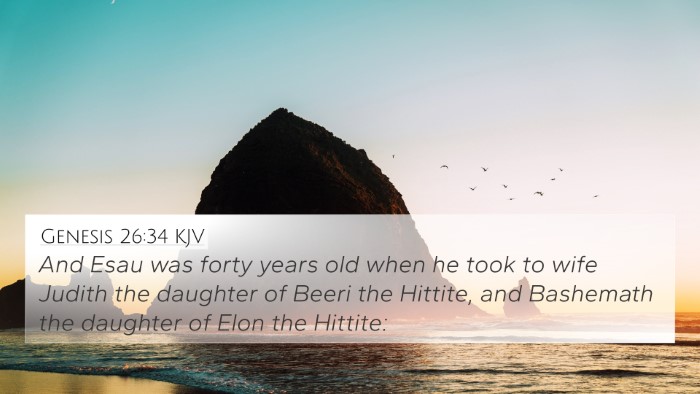Meaning and Interpretation of Genesis 28:9
Genesis 28:9 states, "So Esau went to Ishmael and took Mahalath the daughter of Ishmael, Abraham’s son, the sister of Nebajoth, to be his wife in addition to the wives he had." This verse provides critical insights into the dynamics of family and the ongoing narrative of Jacob and Esau, highlighting how their relationships and choices are intertwined with the broader themes of covenant and lineage.
Understanding the Context
This verse occurs in a pivotal moment in the life of Esau, who, feeling the pressure of familial expectations and covenant responsibilities, seeks a wife from the lineage of Ishmael rather than from the daughters of Canaan, whom his parents disapproved of. Commentaries shed light on the implications of his choice and the broader themes of reconciliation and division within the family of Abraham.
Matthew Henry's Commentary
Matthew Henry explains that Esau's decision reflects his desire to establish a familial bond outside of his immediate lineage. Esau, dissatisfied with the Canaanite women, looks to Ishmael's descendants, indicating his awareness of the importance of covenant lineage, albeit inappropriately following the example of his forefather, Abraham.
Albert Barnes' Analysis
Albert Barnes elaborates that Esau's marriage to Mahalath signifies a turning point in his life, reflecting his ongoing struggle with covenant identity and familial association. Barnes notes that this act could symbolize Esau's attempt to align himself with a lineage that possesses a different blessing than that of Jacob, further fracturing the unity established in Abraham's family.
Adam Clarke's Insights
Adam Clarke emphasizes the cultural implications of Esau's choice, noting that marrying from Ishmael's line could represent an effort to secure a more potent alliance and acceptance among his relatives. Clarke suggests that Esau’s actions, while seemingly strategic, ultimately reflect a departure from divine direction provided by Isaac and Rebecca.
Key Themes and Connections
- Family Dynamics: The relationships between Jacob and Esau illustrate broader tensions within families that can arise from favoritism and rivalry.
- Covenantal Significance: Esau's marriage choices reflect his struggle with understanding and embracing God's covenant with Abraham.
- Divine Sovereignty: Here, the narrative underlines how God's promises are intertwined with human decisions, offering a glimpse into the ongoing divine narrative.
Bible Verse Cross-References
Genesis 28:9 can be connected to several other biblical narratives and verses that enhance its understanding:
- Genesis 16:1-4: The account of Hagar and Ishmael presents the complexities of Abraham's family, contextualizing Esau's choice.
- Genesis 36:2-3: Esau's lineage and marriages are elaborated here, providing further context to Esau's actions.
- Genesis 24:3-4: Abraham instructs his servant to find a wife for Isaac from his relatives, which highlights the importance of covenant relationships.
- Deuteronomy 7:3: God's command to the Israelites regarding intermarrying with surrounding nations reflects the ongoing biblical theme of maintaining covenant purity.
- Hebrews 12:16-17: This New Testament passage references Esau's character and decisions, commenting on the consequences of his actions concerning spiritual inheritance.
- Malachi 1:2-3: God’s declaration about Jacob and Esau provides insight into God’s sovereign choices over the patriarchs.
- Romans 9:13: This echo of Malachi deepens the conversation about God’s election and purpose behind Jacob and Esau.
Conclusion
In Genesis 28:9, we find a rich narrative that extends beyond a simple action of Esau marrying Mahalath. It highlights intricate family ties, the implications of covenant relationships, and God's unfolding narrative through flawed human choices. By examining this verse through various commentaries and cross-references, we uncover essential lessons about identity, belonging, and the significance of our decisions in relation to God’s overarching plan.
Discovering Connections: As we engage in cross-referencing biblical texts, Genesis 28:9 serves as a catalyst to explore deeper connections between Old and New Testament themes, aiding in sermon preparation and personal study.
